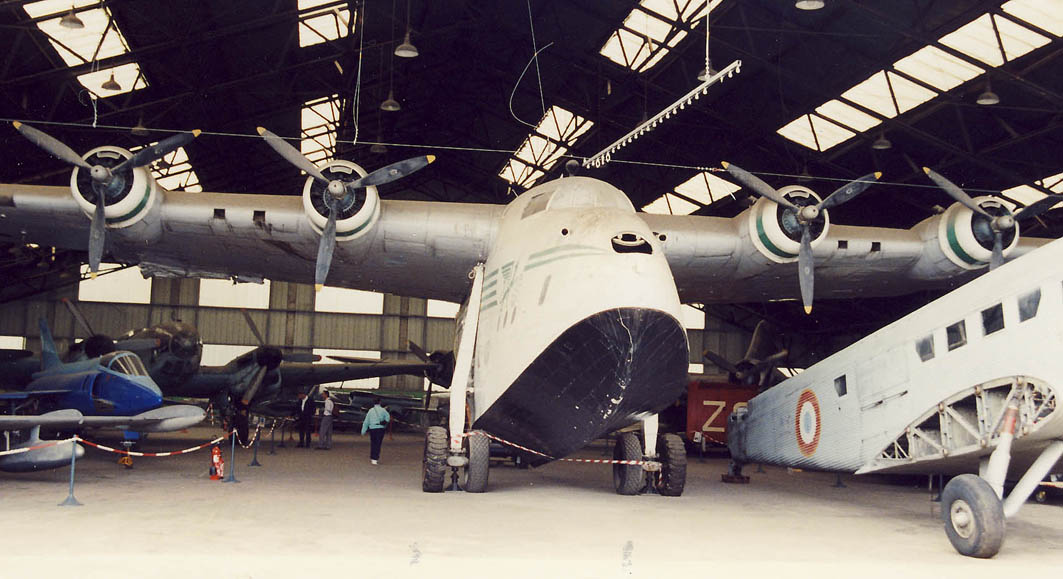
Short Sandringham/Solent/
 |
| Sandringham F-OBIP sits covered in dust and bird droppings in a hangar at the French Musee de l'Air's Dugny store in Paris. It must wait its turn in a long queue for restoration. |
| Short Brothers
developed its Sunderland to an Air Ministry requirement for a general
reconnaissance flying boat and the type saw widepsread service in World War
II. The first prototype flew on October 16, 1937, and a total of 90 Mk1s was built, all powered by four 1,010hp Bristol Pegasus XXII engines. Subsequent production covered 43 MkIIs, 456 of the definitive MkIII, two MkIVs - renamed Seafords - and 150 MkVs. The type operated with numerous air forces, with the French Aeronavale keeping its aircraft until the late 1950s. The Sunderland's civil career began when BOAC began using the first of an eventual 24 MkIIIs on wartime routes. The airline refurbished its aircraft post-war as the Hythe but a more refined conversion, the Sandringham, was then built. This featured properly faired-over turrets and four 1,200hp Pratt and Whitney Twin Wasp R-1830-92 engines. Forty-five passengers could be carried. Around 30 Sandringhams were converted and these served with several airlines around the world, notably Antilles Air Boats, until the late 1970s. BOAC also received 12 Solent 2 conversions, with luxury accommodation for 34 passengers on two decks. The airline also bought the six production Seafords from the RAF and had them converted to 39-passenger Solent 3 configuration. The operator retired its flying boats in November 1950 and the various types saw service around the world. A few Sunderlands, Sandringhams and Solents survive in museums. |
| Contents | Photos and census | Update |